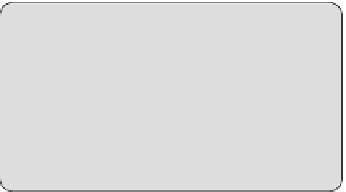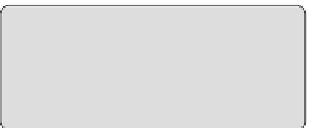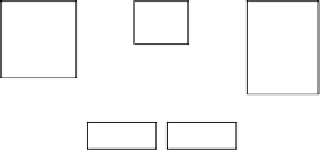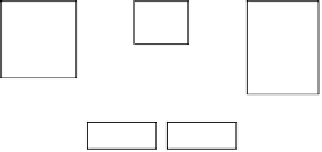Information Technology Reference
In-Depth Information
ORDER
OrdNum
Date
id: OrdNum
ORDER
OrdNum
Date
id: OrdNum
DETAIL
Quantity
DETAIL
Quantity
PRODUCT
Prod#
Name
Price
id: Prod#
PRODUCT
Prod#
Name
Price
id: Prod#
PRODUCT
Prod#
Name
Price
id: Prod#
PRODUCT
Prod#
Name
Price
id: Prod#
ORDER
OrdNum
Date
id: OrdNum
ORDER
OrdNum
Date
id: OrdNum
1-1
1-1
1-1
1-1
detail
Quantity
detail
Quantity
0-N
0-N
0-N
0-N
Ra'
Ra'
Rb'
Rb'
0-N
0-N
1-1
1-1
0-N
Rb
0-N
Rb
1-1
1-1
(b)
Ra
Ra
ORD_DET
ORD_DET
DET_PRO
DET_PRO
1-1
1-1
1-1
1-1
(a)
Fig. 5. Example of IMS style construct and its best practice alternative
5.4
Irregular Constructs
The last category of defects we identified are irregular constructs. They appear
in large schemas when similar types of facts are expressed by different types of
constructs. This anomaly does not affect individual constructs but the schema as
a whole, which appears inconsistent. If these constructs are correct, they belong
to the same equivalence class, so that each non-optimal construct can be replaced
by a better one from this class. This substitution do not decrease the quality
requirements but strengthen the evolvability of the schema.
6 Framework Application
In the previous section, we defined a taxonomy of constructs that can easily be
related to the equivalence classes of the framework. This taxonomy suggests a
way of using and applying the framework as it gives defect detection criteria and
it provides a method for the evaluation and the improvement of schemas. Indeed,
the taxonomy (1) brings a well-focused study of defects, (2) is developed in a
specific context and (3) provides examples that suggest improvement techniques.
In this section, we will discuss the integration of the taxonomy in our framework.
An equivalence class theoretically comprises all the constructs that can be used
for representing a specific type of facts, independently of the context. Given a
definite context, each construct of a class will receive a score, that defines its level
of quality. The taxonomy allows to identify more precisely the constructs that
are considered as defects and therefore to specialize the framework to quality
evaluation and improvement in a particular situation.
An important aspect of the framework is the development of ratings, i.e.,
the definition of quality scales and the application of these scales to the scoring
of the constructs. Obviously the definition of ratings for all constructs of each
equivalence class, for all possible contexts should be a huge task. Again, the tax-
onomy can be used to specialize the framework. Simple ratings can be produced
using the quality differences between the elements of each couple
(problem, so-
lution)
of the
complex
and the
foreign
construct categories (the
irregular
and
redundant
construct categories will not be used here as they do not provide such
evaluations). Example of ratings and a deeper discussion about the evaluation
of schema quality using the framework can be found in [1].



















































